Duponchelia
Name
Duponchelia Zeller, 1847
Type species: Duponchelia fovealis Zeller, 1847
Synonyms: none.
Overview
Duponchelia currently includes three species distributed in the tropics to warm temperate areas. A few other genera with many more species, principally Penestola Möschler and Tatobotys Butler, are closely related to Duponchelia. They have no known economic importance. The genera have not been revised, and aside from D. fovealis, genitalic dissection is necessary for identification.
The few known larvae in this genus group live in the leaf litter of mangrove swamps or coastal marshlands, where they feed on decaying plant matter or fresh, succulent material if available. The adults are generally brownish moths of similar size, but distinctive adult characters include an elongate abdomen and a forewing foveaFovea:
A scale-less transparent spot on the forewing, often surrounded by distorted veins.
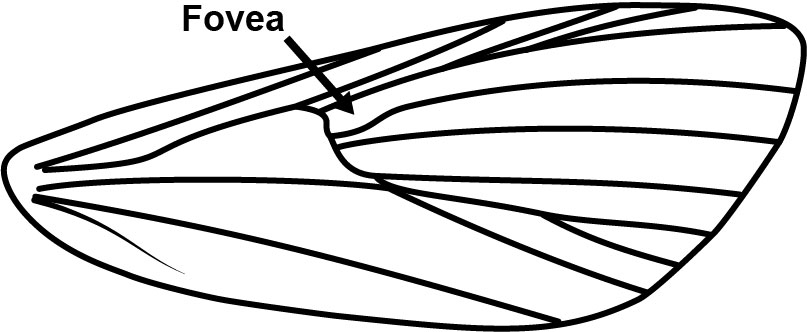 in the males of some species. The male genitalia have oval, relatively hairy valvae, a set of two or three twisted fibulae near the base of the valvaValva:
in the males of some species. The male genitalia have oval, relatively hairy valvae, a set of two or three twisted fibulae near the base of the valvaValva:
One of the pair of large lateral appendages of the male genitalia (pl. valvae).
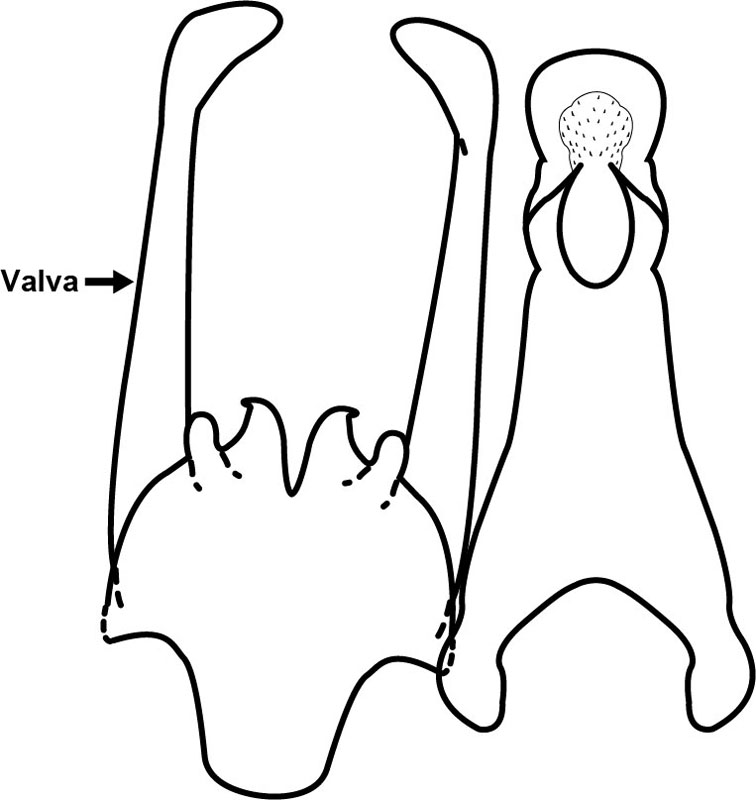 , and a pair of hair pencils on the tegumenTegumen:
, and a pair of hair pencils on the tegumenTegumen:
The dorsal part of the male genitalia, from which the uncus and gnathos (if present) arise.
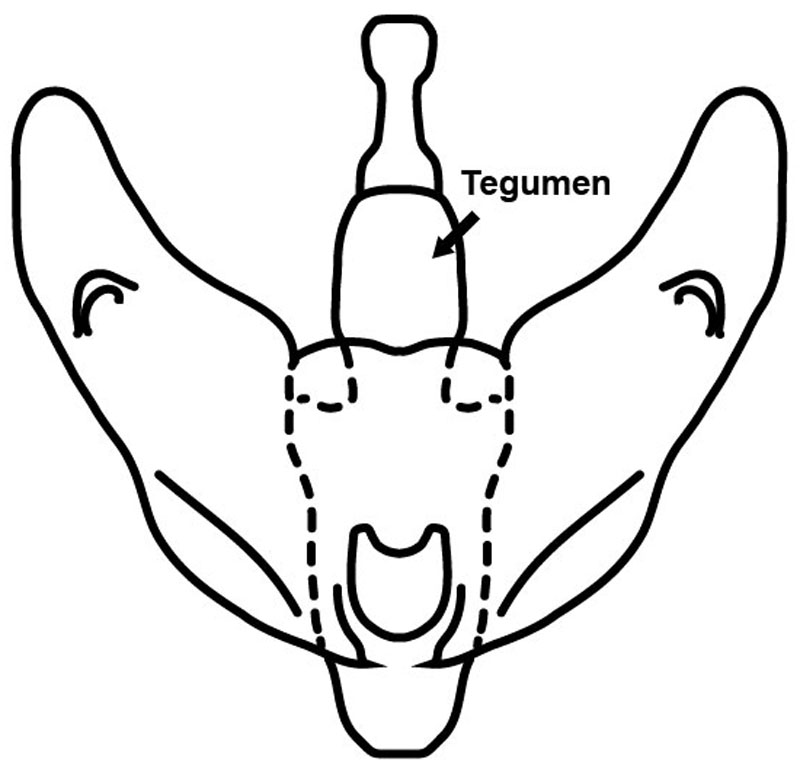 . Females have a short ductus bursaeDuctus bursae:
. Females have a short ductus bursaeDuctus bursae:
The usually narrow duct between the ostium and antrum and the corpus bursae.
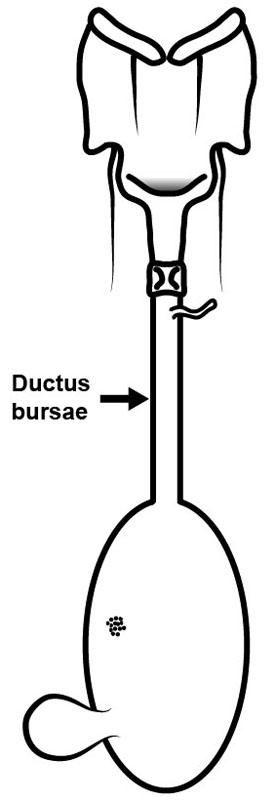 and a small, globular corpus bursaeCorpus bursae:
and a small, globular corpus bursaeCorpus bursae:
The enlarged, bulbous anterior end of the female genitalia.
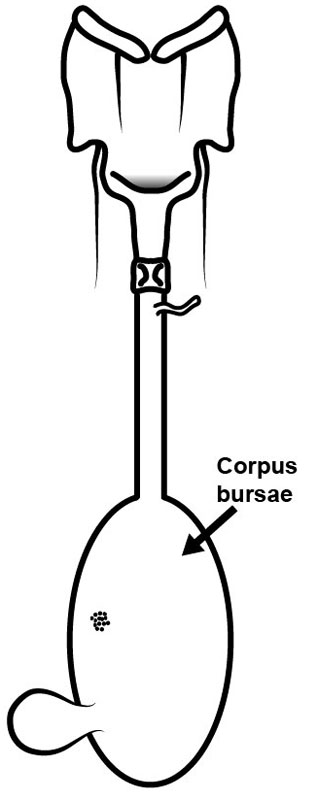 without a signumSignum:
without a signumSignum:
Any sclerite, sclerotized area, or discrete granular area on the wall of the corpus bursae (pl. signa).
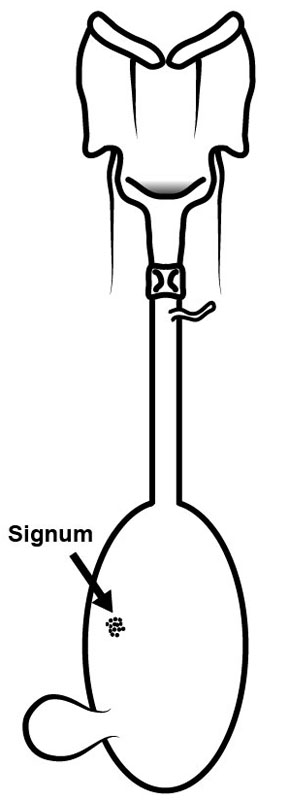 . Of the known larvae, the most distinctive character is probably the reduced, hairlike condition of SD2 on T2 and T3; other characters are the trisetose A1 SV group and the reduction of the SD pinacula on A2 and A7. Duponchelia fovealis differs from related species as indicated in the species account, particularly in the white lines on the forewing and the stalked forewing M3+CuA1.
. Of the known larvae, the most distinctive character is probably the reduced, hairlike condition of SD2 on T2 and T3; other characters are the trisetose A1 SV group and the reduction of the SD pinacula on A2 and A7. Duponchelia fovealis differs from related species as indicated in the species account, particularly in the white lines on the forewing and the stalked forewing M3+CuA1.
Duponchelia in the Nearctic includes only D. fovealis. Two species of Penestola occur in coastal peninsular Florida.

